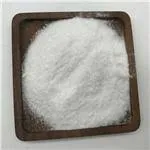Types of Coagulants in Water Treatment
Water treatment is a critical process aimed at removing impurities and ensuring that water is safe for consumption and use. One of the essential steps in this process is coagulation, which involves the addition of chemicals known as coagulants to facilitate the aggregation of particles and colloids suspended in the water. This article explores the various types of coagulants used in water treatment, their mechanisms of action, and their overall importance in ensuring water purity.
Types of Coagulants in Water Treatment
Inorganic Coagulants The most commonly used coagulants in water treatment are inorganic compounds, particularly aluminum sulfate (alum) and ferric chloride. These substances work through a process called charge neutralization. When added to water, inorganic coagulants dissociate to form positively charged ions, which neutralize the negatively charged particles suspended in the water. This neutralization allows the particles to clump together, forming larger aggregates known as flocs, which can then be removed through sedimentation or filtration. Alum is widely used due to its efficiency and cost-effectiveness; however, it can increase the water's acidity and may leave residual aluminum in the treated water.
types of coagulants in water treatment pdf

Organic Coagulants Organic coagulants, including polyacrylamides and various other synthetic polymers, are gaining popularity due to their effectiveness in treating a wide range of water qualities. These coagulants can act through both charge neutralization and bridging mechanisms. The long-chain molecules in organic coagulants can efficiently link particles together, enhancing the floc formation process. They are particularly effective in low-turbidity waters and offer the advantage of producing less sludge compared to inorganic coagulants.
Natural Coagulants Natural coagulants, derived from plant and animal sources, are increasingly recognized for their potential as environmentally friendly alternatives. Examples include chitosan, extracted from crustacean shells, and Moringa oleifera seeds, which contain natural coagulant properties. These coagulants have the advantage of being biodegradable and non-toxic, making them suitable for small-scale water treatment operations, especially in developing regions. They work similarly to synthetic coagulants, aiding in the aggregation and settling of particles.
In conclusion, the choice of coagulant in water treatment is crucial and depends on various factors, including water quality, treatment objectives, and environmental considerations. While inorganic coagulants like alum and ferric chloride remain predominant in the industry, the rise of organic and natural coagulants presents new opportunities for improving water treatment processes. As the demand for clean and safe drinking water continues to grow, ongoing research into coagulant efficiency and sustainability will play a vital role in advancing water treatment technologies. By understanding the different types of coagulants and their functions, water treatment plants can optimize their processes to ensure high-quality water for all.

